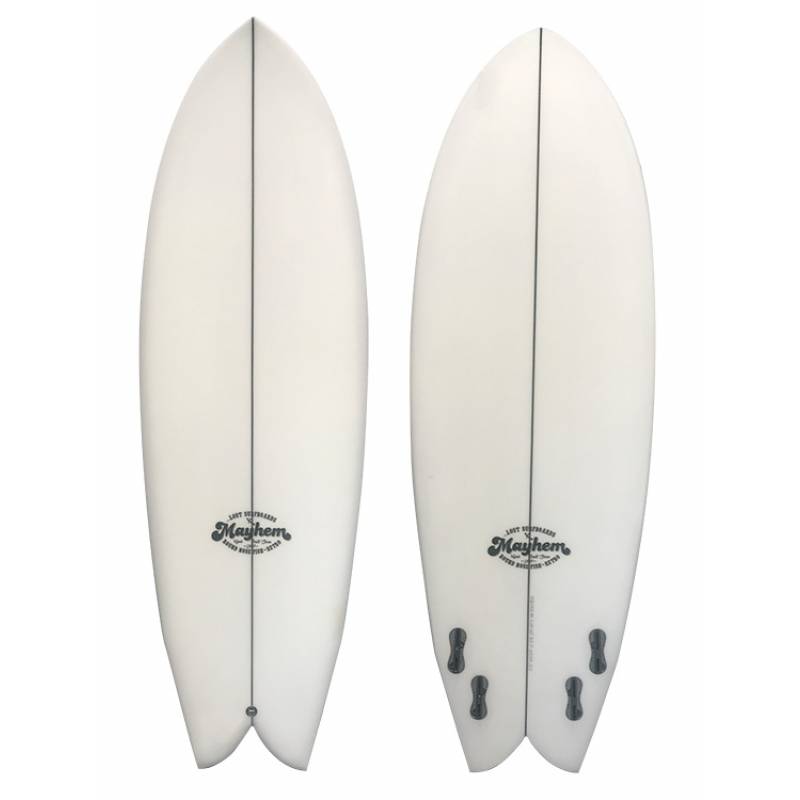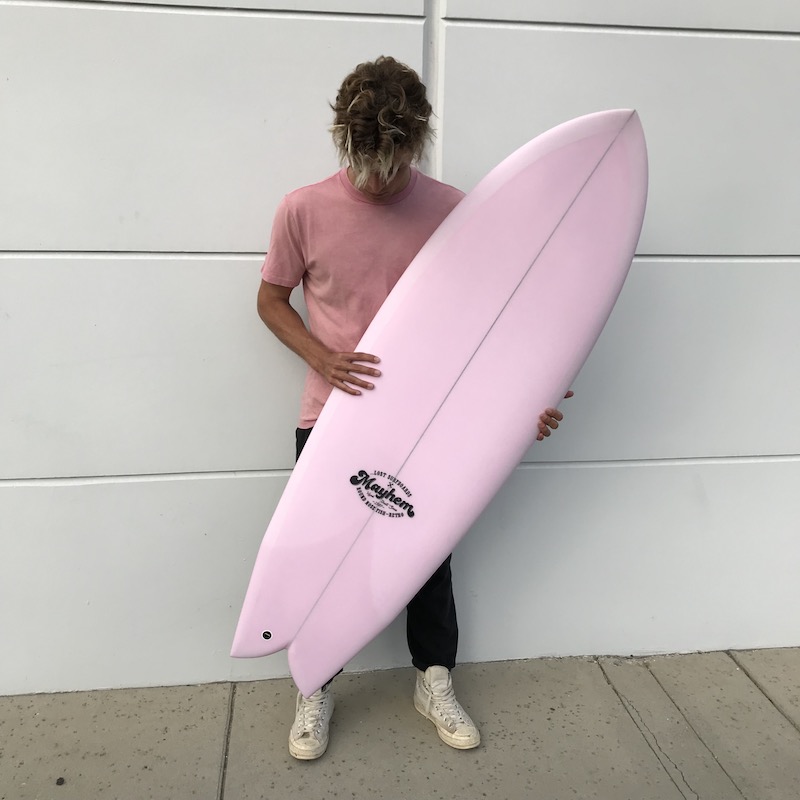Lost Surfboards – Mayhem – Round Nose Fish Retro
€785.00
The RNF Retro is our latest spin on the always evolving #RoundNoseFish. It features noticeable elements from the purist (mostly San Diego influenced) evolution of wide, split tailed “Fish”, and smashes them together with much of what we have learned in nearly 26 years of shaping and surfing the RNF. First off, the tail is wide for that effortless glide and retro feeling. Coming in at over 10” from tip to tip, and 4” deep, it’s the deepest and widest split tail we’ve released. The board prominently features a snowboard-esque, double side cut outline. Strongly influenced by years of snowboarding, and then seeing the boards of underground SD shapers like Mirandon and Caster, we first developed and released our double side cut on the “Pelagic” model, in the late 2000’s. Like with a snowboard, the sidecut “grips” the riding surface and allows for more radical, tighter radius direction changes on wider, otherwise di cult to turn sharply, outlines and at rockers. The sidecut hooks into the wave face and turns surprisingly sharp, without the usual drift or skip or slip, associated with common wide tail sh shapes. Staying with the shy retro vibe, the #RNF_Retro features a very at deck with a de ned, steeply angled rail, but tucked under soft into the bottom. The at deck allows the board to be ridden thinner, which enables more ex. Thin at decks maintain more scoop in the deck rocker, which when surfed with the rail buried perpendicular into the surface, helps low rocker boards turn in tighter arcs, rather than tracking or flattening out. All these elements are built around our time tested and proven RNF rocker bottom curves. The RNF Retro is at up front with the slightest of single concave through the center, and a spiral vee from the fins back. This equates to a fast, yet precise and comfortable, familiar ride, without sacrificing glide. Keels are fast and fun, but split keels perform better. The RNF Retro is designed to be ridden with split keels, or a Twin + two (small trailers) quad setup. There’s no rear n box on this thing. We created a special, subdued, era reminiscent, model specific logo just for this board.





